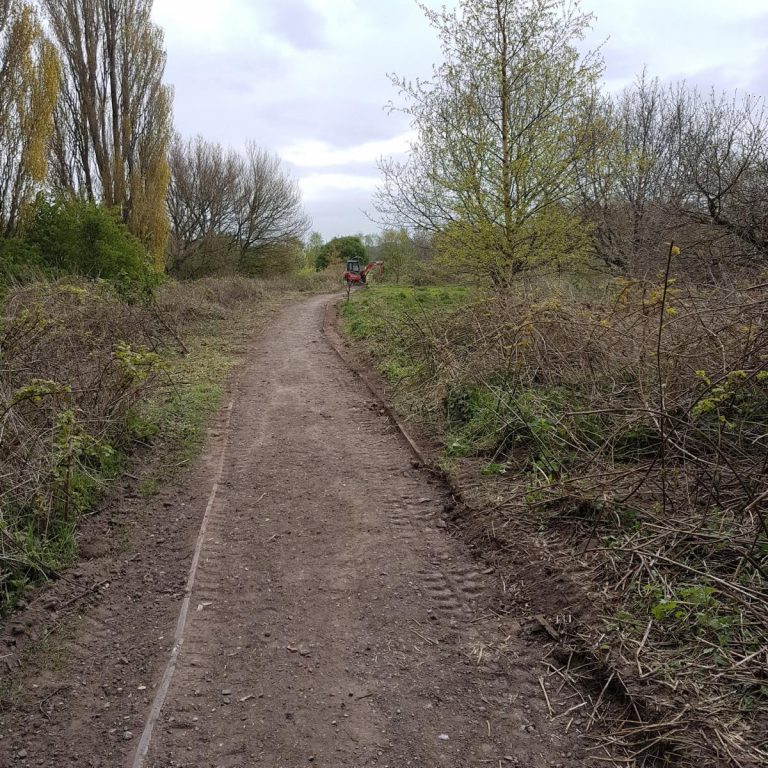One of Liverpool’s most vibrant nature reserves is to be transformed thanks to its most significant restoration project in the last 50 years.
And a team of volunteers from Liverpool Hope University is to lend a hand with the project.
Childwall Woods is a 39-acre woodland in the south east suburbs of Liverpool, with views overlooking the Lancashire and Cheshire plain.
First established in the 1700s, it’s home to a picturesque network of nature trails as well as an abundance of wildlife.
Now the conservation group The Friends of Childwall Woods and Fields (FCWF) has been granted £90,000 - thanks to Liverpool City Council and a grant from Veolia Environmental Trust - to completely overhaul the site.
John McCombs, Chair of the FCWF, says not only will the renovation improve access, it could also unearth long forgotten secrets of the Woods’ past.
Meanwhile Dione Roye - Youth and Community Work student at Hope - is helping to coordinate the student volunteers, as part of the University's Community Engagement Team.
She said: “Childwall Woods is a beautiful, invigorating space that helps people of all ages feel connected not just to nature, but to the surrounding community.
“We've had a tough year with COVID-19 and many people, including students and members of the Childwall community, have felt extremely isolated. The University’s Community Engagement team has jumped at the chance to get involved with this FCWF project, as we believe the Woods represent the perfect place to ‘reconnect’.”
The FCWF recently scooped the ‘Community Impact’ at the Liverpool Echo’s Environment Awards. And group Chair John says the hard work of restoring the Woods back to former glories has begun in earnest.
He explains: “We’ve quite simply never had a renovation project like this in the history of Woods. The funding represents the biggest investment into the Woods for 50 years.
“And this renovation is a springboard not just for getting more volunteers to join the group but to secure this incredible landscape for future generations.”
The list of jobs that need to be undertaken in the year-long project is extensive.

John says there’s a 1,000 linear metres of pathway to be repaired and hectares of grassland to be restored, as well as the creation of a wetland environment, significant wildflowers being planted, invasive species better managed and new trees introduced.
Some areas of the Woods - such as the ‘Monkey Island’, a sunken garden nestled beneath large sandstone walls - are currently tricky to enjoy as it’s shrouded in mud and brambles but they’ll be cleared out and access restored as part of the overhaul.
A famous ‘Carriageway’, which once led up to the Childwall Hall that sat at the head of the grounds, will also be cleared for the first time in a half-century.
John adds: “These are some of the most interesting parts of the Woods and, for me, the renovation of the Carriageway is going to be fascinating.
“The social history of Childwall Woods is just as important as the ecology and species diversity that we enjoy. The Carriageway is a great example of the ‘conspicuous wealth’ of the past, seeing as its hewn from the natural sandstone. There’s a bend in the route so that guests would enjoy a big ‘reveal’ of the manor house in the distance.
“It must have taken an army of navvies to complete the construction, as it’s almost like a mini canal, and it deserves to be reinstated.
“This area is also home to rare and hybrid species of rhododendrons and trees. We’ve inherited this legacy and it needs our support to preserve it.
“And what’s also exciting is that as we peel back the layers of history, we may well find artefacts from the past. The Woods are rich in ancient bottles and WWII memorabilia for example. A local metal detectorist has unearthed quite a collection.
“The biggest reveals, meanwhile, could be found in the ornamental part of the gardens. We suspect there are even more specialist species, including ancient trees, to be found there than we’ve already documented. We have to weave our way through this delicate past and find the right experts to help us understand their significance.”
The Friends group itself has more than 130 family members and eight trustees who support through regular donations and who also take part in volunteering events.
Those volunteer days are also often over-subscribed - as supporters go the extra mile to offer help.
John says: “It’s fantastic that we have this level of support and it’s heartwarming to see people on site, smiling, and lending a hand. We want to create a body of people that’ll carry on beyond this year long project.
“We know the links between nature and wellbeing. Spirits are lifted by being on site. And I think these natural landscapes have become even more valuable and important because of the Covid-19 pandemic.”
Liverpool Hope University has long had close ties with Childwall Woods.
Rev. Paul Rooney, Head of Geography & Environmental Science, explains how, in the early 2000s, an initial Friends group working to support the Woods lobbied to have the site designated as an official Local Nature Reserve (LNR).
To do that the group had to demonstrate both community interest and the educational use of the area.
And, working in conjunction with a nature conservation officer from Liverpool City Council, Rev. Rooney began running fieldwork trips to Childwall Woods with second year undergraduate Environmental Science students.
Rev. Rooney adds: “We not only ran ecological investigations but students also wrote conservation management plans for the site.
“That use of the site by our students strengthened the application for Childwall Woods to become an official LNR, with the designation eventually taking place in July 2004.
“We continue to use Childwall Woods to this day. And it’s a truly valuable local resource that we’re proud to have an historic association with.”
One of the key areas of research for Hope students has been around how land managers can establish woodland cover on landfill sites - with parts of Childwall Woods being located on a landfill dating back to the 1950s.
When the soil cap is thin, it can be tough for early years trees to flourish in these relatively harsh conditions - which is a problem Hope researchers are looking to find a solution for.
Rev. Rooney reveals: “We’re not just concerned about the survivability of trees grown in this environment, but we’re also interested in how well they succeed in the face of climate change.”
Speaking about the Friends of Childwall Woods and Fields group, whose first annual general meeting on the group’s relaunch was held at Hope, Rev. Rooney adds: “We’re thankful to have the Friends of Childwall Woods group as close allies.
“They’re a brilliant team, so full of energy and passion, and they’re a real credit to the local community.
“For Hope to be a supporter, and a part of the initiative, is the mark of our commitment to the environment, and to all the people involved in the project.
** To find out more about The Friends of Childwall Woods, head here.
** To learn more about Liverpool Hope University’s Community Engagement Team, head to this link.



